Iron Promotes Cardiac Doxorubicin Retention and Toxicity Through Downregulation of the Mitochondrial Exporter ABCB8
- PMID: 35359834
- PMCID: PMC8963208
- DOI: 10.3389/fphar.2022.817951
Iron Promotes Cardiac Doxorubicin Retention and Toxicity Through Downregulation of the Mitochondrial Exporter ABCB8
Abstract
In several cancers, the efflux and resistance against doxorubicin (DOX), an effective anticancer drug, are associated with cellular iron deficiency and overexpression of the mitochondrial exporter ABCB8. Conversely, decreased ABCB8 expression and disrupted iron homeostasis in the heart have been implicated in DOX-associated cardiotoxicity. While studies have demonstrated that altered iron status can modulate the susceptibility to DOX cardiotoxicity, the exact molecular mechanisms have not been clearly understood. Here, we hypothesized that iron stores influence cardiac ABCB8 expression and consequently cardiac retention and toxicity of DOX. First, we found that ABCB8 deficiency in cardiomyocytes decreased DOX efflux, increased DOX-induced toxicity, and decreased cell viability. Conversely, intracellular DOX retention and toxicity were ameliorated by ABCB8 overexpression. To determine if altered cardiac iron status modifies ABCB8 expression, we treated cardiomyocytes with high iron or iron chelators. Western blot and qPCR analyses revealed that ABCB8 levels were decreased in iron overload and increased in iron deficiency. Subsequently, DOX retention and toxicity were increased in cardiomyocytes with iron overload, whereas iron deficiency ameliorated these effects. Next, we validated our results using a mouse model of hereditary hemochromatosis (HH), a genetic iron overload disorder. HH mice exhibited decreased ABCB8 expression and increased DOX retention and toxicity. These changes were abolished by the treatment of HH mice with a low-iron diet. Finally, cardiac-specific overexpression of ABCB8 in HH mice prevented cardiac DOX accumulation and abrogated DOX-induced cardiotoxicity without altering iron overload in the heart. Together, our results demonstrate that ABCB8 mediates DOX efflux and that iron regulates DOX retention and toxicity by altering cardiac ABCB8 expression. Our study identifies a novel role of iron in DOX-induced cardiotoxicity and suggests potential therapeutic intervention for DOX and anthracycline-based cancer pharmacology.
Keywords: cardiotoxicity; doxorubicin efflux; hemochromatosis; iron chelator; iron overload.
Copyright © 2022 Menon and Kim.
Conflict of interest statement
The authors declare that the research was conducted in the absence of any commercial or financial relationships that could be construed as a potential conflict of interest.
Figures
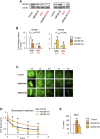
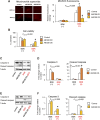
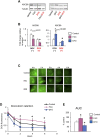
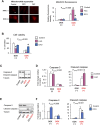
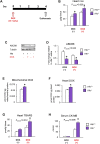
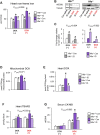
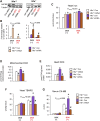
Similar articles
-
Hfe deficiency increases susceptibility to cardiotoxicity and exacerbates changes in iron metabolism induced by doxorubicin.Blood. 2003 Oct 1;102(7):2574-80. doi: 10.1182/blood-2003-03-0869. Epub 2003 Jun 12. Blood. 2003. PMID: 12805055
-
Paradoxically, iron overload does not potentiate doxorubicin-induced cardiotoxicity in vitro in cardiomyocytes and in vivo in mice.Toxicol Appl Pharmacol. 2015 Apr 15;284(2):152-62. doi: 10.1016/j.taap.2015.02.015. Epub 2015 Feb 21. Toxicol Appl Pharmacol. 2015. PMID: 25711856
-
Exercise and Doxorubicin Modify Markers of Iron Overload and Cardiolipin Deficiency in Cardiac Mitochondria.Int J Mol Sci. 2023 Apr 22;24(9):7689. doi: 10.3390/ijms24097689. Int J Mol Sci. 2023. PMID: 37175395 Free PMC article.
-
Glycyrrhiza glabra (Licorice) root extract attenuates doxorubicin-induced cardiotoxicity via alleviating oxidative stress and stabilising the cardiac health in H9c2 cardiomyocytes.J Ethnopharmacol. 2020 Aug 10;258:112690. doi: 10.1016/j.jep.2020.112690. Epub 2020 Feb 24. J Ethnopharmacol. 2020. PMID: 32105749
-
Rare causes of hereditary iron overload.Semin Hematol. 2002 Oct;39(4):249-62. doi: 10.1053/shem.2002.35638. Semin Hematol. 2002. PMID: 12382200 Review.
Cited by
-
Precision Treatment of Anthracycline-Induced Cardiotoxicity: An Updated Review.Curr Treat Options Oncol. 2024 Aug;25(8):1038-1054. doi: 10.1007/s11864-024-01238-9. Epub 2024 Jul 27. Curr Treat Options Oncol. 2024. PMID: 39066853 Free PMC article. Review.
-
MicroRNAs in doxorubicin-induced cardiotoxicity: The DNA damage response.Front Pharmacol. 2022 Nov 21;13:1055911. doi: 10.3389/fphar.2022.1055911. eCollection 2022. Front Pharmacol. 2022. PMID: 36479202 Free PMC article. Review.
-
Iron Load Toxicity in Medicine: From Molecular and Cellular Aspects to Clinical Implications.Int J Mol Sci. 2023 Aug 18;24(16):12928. doi: 10.3390/ijms241612928. Int J Mol Sci. 2023. PMID: 37629109 Free PMC article. Review.
-
Genetic Susceptibility and Mechanisms Underlying the Pathogenesis of Anthracycline-Associated Cardiotoxicity.Oxid Med Cell Longev. 2022 Aug 3;2022:5818612. doi: 10.1155/2022/5818612. eCollection 2022. Oxid Med Cell Longev. 2022. PMID: 35965684 Free PMC article. Review.
-
Why Do Dietary Flavonoids Have a Promising Effect as Enhancers of Anthracyclines? Hydroxyl Substituents, Bioavailability and Biological Activity.Int J Mol Sci. 2022 Dec 26;24(1):391. doi: 10.3390/ijms24010391. Int J Mol Sci. 2022. PMID: 36613834 Free PMC article. Review.
References
-
- Akimoto H., Bruno N. A., Slate D. L., Billingham M. E., Torti S. V., Torti F. M. (1993). Effect of Verapamil on Doxorubicin Cardiotoxicity: Altered Muscle Gene Expression in Cultured Neonatal Rat Cardiomyocytes. Cancer Res. 53 (19), 4658–4664. - PubMed
LinkOut - more resources
Full Text Sources
Molecular Biology Databases

